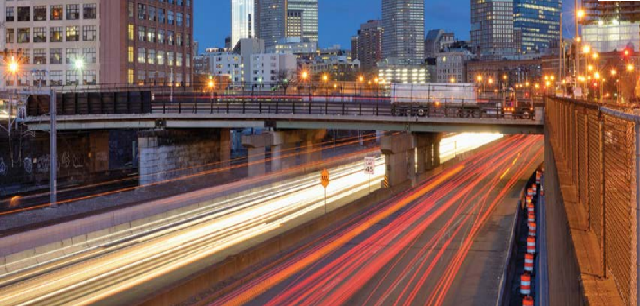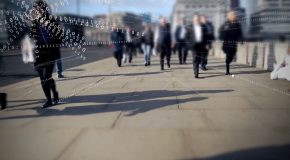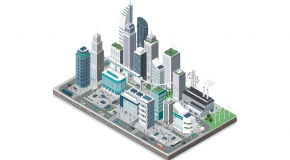
With the help of sensors on roadways and applications on the phones of drivers, cities all around the world are actively collecting real-time data about traffic patterns. The data is more than just useful for drivers and interesting for city developers, it has the potential to revolutionise the way cities manage their roadways, reduce congestion and develop neighbourhoods. But in order to utilise the data effectively, cities must often first address a gaping disconnection between the value of the data they collect and the resources available to put them to work—starting with strong leadership.
Some governments are already preparing for a data-rich future. Jascha Franklin-Hodge, chief information officer for the city of Boston, is taking charge of these efforts for his city. Boston and its surrounding roadways are no stranger to traffic. According to the 2015 Urban Mobility scorecard, it ranks sixth in the US for traffic congestion, and it costs the average Bostonian commuter 64 hours per year behind the wheel. Every efficiency helps, and Mr Franklin-Hodge and his team spend a great deal of time working on solutions.
In the nearly two years since the founding of the team, Mr Franklin-Hodge says they have made a series of improvements by actively integrating data from a broad range of transit apps, CTVs, street sensors, 311 reports and countless unique data-generating devices. The improvements include using data to optimise lane changes, to learn how construction projects affect congestion over time and to understand how effective enforcement of blocking-the-box policies are at changing driver behaviour. To fine tune their solutions, the data and analytics team spend a lot of time with city departments “just watching and asking questions” about how they use their tools and where those tools can be improved. “Data doesn’t solve anything, but it allows for a smarter intervention when it’s used to make operations better,” Mr Franklin-Hodge says.
“Where we can really show measurable impact is often where we do experiments around policy,” Mr Franklin-Hodge explains. For example, the Seaport District in Boston is growing rapidly, creating new stresses and challenges for the transportation network. “We’ve identified a couple of intersections in that developing neighbourhood that were increasingly becoming choke points for vehicle traffic,” he says. Based on that identification, Boston’s data and analytics team worked with the traffic engineering centre to develop a new signal-timing plan that more accurately reflects the new demands on the road system. “We were able to cut down the number of jams detected in that stretch of roadways by a very significant percentage,” Mr Franklin-Hodge reports.
Indeed, beginning August 1 through the end of January, a period typically associated with an uptick of traffic, they observed an average 9.3% month over month reduction in jams on the district’s main road, Seaport Boulevard.
“It’s not just Boston, New York, Chicago and Los Angeles doing this innovative work with data,” he adds. “All city governments are going to be transformed by what’s happening.”
Partnering to build capabilities
Many cities learning to harness traffic data point to Waze, a community-based traffic and navigation app, as a strategically important tool for monitoring traffic congestion. More than 55 cities worldwide, including Boston, now exchange information with Waze through its Connected Citizens Programme, a partnership in which Waze provides cities with real-time road closure alerts, congestion alerts, construction reports and incident alerts generated by drivers. In turn, the partnering cities can help Waze populate its maps with data about scheduled road closures, parade routes and emergency evacuation routes to reroute drivers within its region.
Yet data sharing services like Waze are constantly challenged by the varying degrees of skill sets and the availability of technical resources in their government partners. Some are only capable of receiving the alerts through an email, rather than connecting a live real-time feed to a traffic infrastructure. Many governments have siloed analytics technologies that make it difficult to reuse data for secondary purposes. Paige Fitzgerald, programme manager of Waze’s Connected Citizens Programme data exchange believes that to fully utilise this growing data pool, cities around the world will need to become vastly better at aggregating data, developing standards and, perhaps most important, prioritising the human and technical resources to analyse data and experiment.
A future of capability
“Coming from the private sector to tackle government, I don’t think I quite appreciated the depth of mission and commitment people inside government feel towards the work that they do,” says Mr Franklin-Hodge, who previously founded a web-based software company for political campaigns and nonprofits. “When you talk to people in the data transportation department about traffic engineering and signal timing, you see they are passionate about this. They really understand they are here to serve the city and to help improve mobility.”
But even with the best motivations in the world, bringing the various data streams together to create custom capabilities is no small task. For example, Boston recently built a tool to help firefighters pull up all of the city’s available information about a building fire while in route to the location; this required an integration of seven different systems that housed everything from building permits and 311 reports into one. Seemingly simple things like defining an address were challenging, in this case because the coding of that information is different in each system. Without a dedicated team with the bandwidth and skill to engage in the technical and administrative work, it is unlikely experimental solutions like these would be developed at all.
Yet Mr Franklin-Hodge has great expectations. “We have all these city agencies looking round asking how they can deliver better services and do better operations,” he says. “They are asking for technology to come make them more effective. My hope is that in ten years we don’t actually need a city analytics team.” Instead, city employees will lead from the bottom up, empowered with comprehensive tools, and knowledge and perspective about how data can and should influence their operations and improve people’s lives. “Instead of having a team who exists to connect the dots between technology opportunity and business needs, the business itself is connecting those dots every day with a suite of tools.”
Mr Franklin-Hodge adds that leadership from the top as well as the bottom is crucial to success. “I’m fortunate to have in Mayor Walsh someone who understands the power of technology and data to succeed at his job,” says Mr Franklin-Hodge. “From my perspective, it would be very hard to do what we do in Boston if we didn’t have a chief executive who endorsed it and who wanted to make it part of his daily routine and that of his leadership’s teams.” Without that, “you can build all the great tools you want, but it’s going to be very difficult to even have an impact inside a government.”
Download the case study here.







